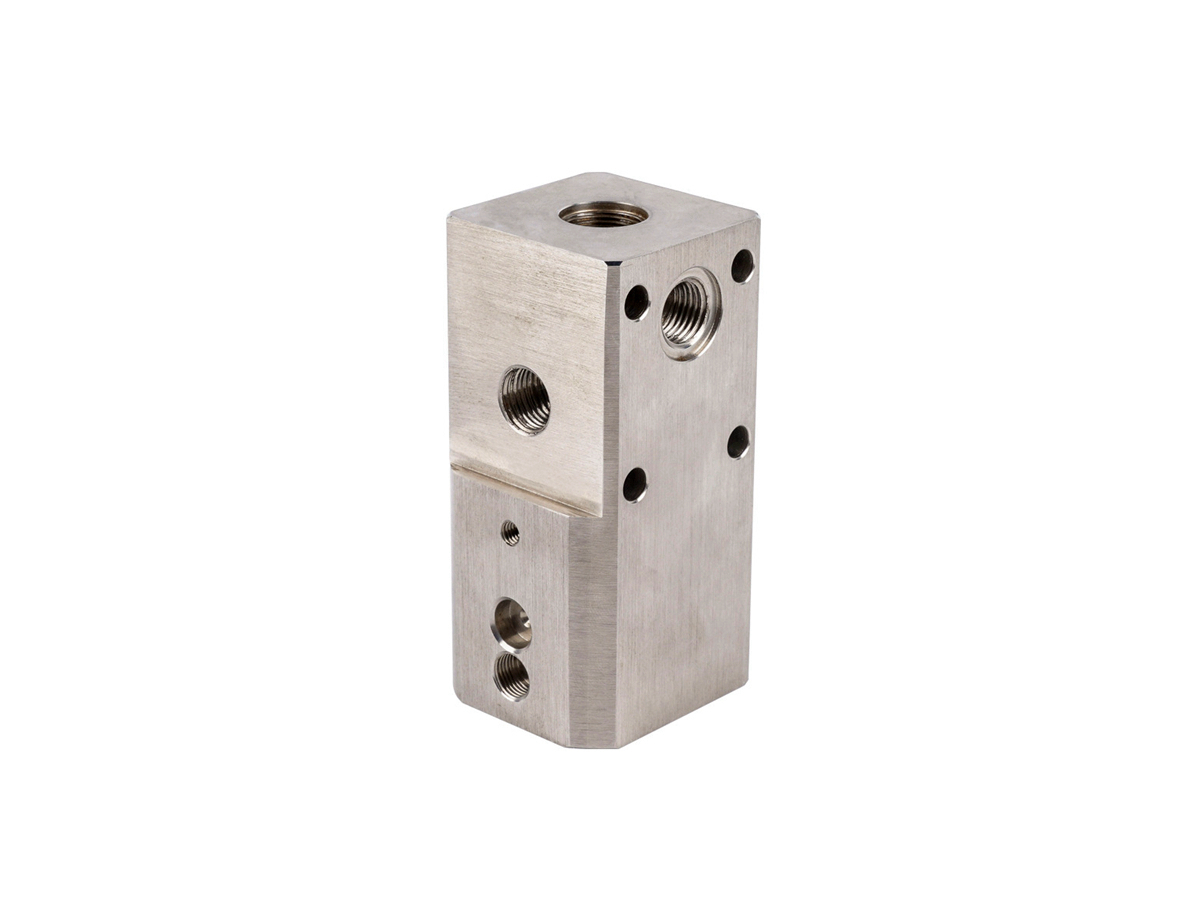Why Ti-5Al-2.5Sn Alloy is Revolutionizing Robotics and Automation Components
Introduction
The robotics and automation industry consistently seeks innovative materials to improve performance, precision, and longevity. The Ti-5Al-2.5Sn titanium alloy provides exceptional mechanical strength, low density, and excellent corrosion resistance, positioning it as a game-changing material for robotic arms, actuator housings, structural frames, and precision motion-control components.
Utilizing advanced CNC machining, manufacturers can accurately fabricate complex Ti-5Al-2.5Sn components. This machining process ensures strict dimensional accuracy, intricate designs, and superior surface finishes, directly enhancing robotic systems' and automated machinery's performance, reliability, and durability.
Ti-5Al-2.5Sn Alloy for Robotics and Automation
Material Performance Comparison
Material | Tensile Strength (MPa) | Yield Strength (MPa) | Density (g/cm³) | Typical Applications | Advantage |
|---|---|---|---|---|---|
860-950 | 780-830 | 4.48 | Robotic arms, actuator housings | Excellent strength-to-weight, high fatigue resistance | |
950-1100 | 880-950 | 4.43 | Structural frames, gears | High tensile strength, strong corrosion resistance | |
620-780 | 483-655 | 4.48 | Precision tubing, robotic fittings | Superior formability, corrosion resistance | |
570 | 505 | 2.81 | Lightweight housings, brackets | Exceptional machinability, lightweight |
Material Selection Strategy
Selecting optimal materials for robotics components involves precise evaluation of strength, weight reduction, and reliability:
Robotic arms and actuator housings requiring a balance between high strength (up to 950 MPa tensile strength) and low density (4.48 g/cm³) choose Ti-5Al-2.5Sn to enhance payload capacity and precision motion control significantly.
Structural frames and gears demanding extreme mechanical strength (up to 1100 MPa tensile strength) prefer Ti-6Al-4V (Grade 5) for its superior tensile properties and robust corrosion resistance.
Precision tubing and robotic fittings needing good formability, moderate strength (780 MPa tensile), and excellent corrosion resistance leverage Ti-3Al-2.5V (Grade 12), offering reliable performance and lighter weight.
Lightweight brackets and low-load housings prioritizing ease of machinability and ultra-low density (2.81 g/cm³) use Aluminum 7075-T6, achieving an optimal balance between performance and cost.
CNC Machining Processes
Process Performance Comparison
CNC Machining Technology | Dimensional Accuracy (mm) | Surface Roughness (Ra μm) | Typical Applications | Key Advantages |
|---|---|---|---|---|
±0.02 | 1.6-3.2 | Simple housings, structural brackets | Cost-effective, consistent quality | |
±0.015 | 0.8-1.6 | Rotational robotic joints, flanges | Enhanced dimensional precision, fewer setups | |
±0.005 | 0.4-0.8 | Complex robotic components, precision actuators | Superior accuracy, excellent surface finish | |
±0.003-0.01 | 0.2-0.6 | High-precision micro-components, sensors | Maximum precision, intricate geometries |
Process Selection Strategy
Selecting the appropriate CNC machining methods for robotic Ti-5Al-2.5Sn components depends on complexity, precision, and operational requirements:
Simple structural brackets and housings requiring standard precision (±0.02 mm) economically benefit from 3 Axis CNC Milling, ensuring reliable and cost-effective production.
Rotational robotic joints and moderately complex actuator housings requiring improved accuracy (±0.015 mm) utilize 4 Axis CNC Milling to reduce machining setups while enhancing dimensional accuracy.
Complex robotic arms, precision actuators, and detailed components requiring tight tolerances (±0.005 mm) and optimal surface finishes (Ra ≤0.8 μm) benefit significantly from 5 Axis CNC Milling, greatly enhancing component precision and functionality.
High-precision sensors, micro-components, and specialized robotic parts demanding extreme accuracy (±0.003 mm) and intricate shapes rely on Precision Multi-Axis CNC Machining, maximizing precision and performance.
Surface Treatment
Surface Treatment Performance
Treatment Method | Corrosion Resistance | Wear Resistance | Max Operating Temp (°C) | Typical Applications | Key Features |
|---|---|---|---|---|---|
Excellent (≥800 hrs ASTM B117) | Moderate-High | Up to 400 | Robotic arms, actuator housings | Durable protective coating, enhanced aesthetics | |
Outstanding (>1000 hrs ASTM B117) | Very High (HV1500-2500) | Up to 600 | High-wear robotic joints | Extreme hardness, friction reduction | |
Excellent (~900 hrs ASTM B117) | Moderate | Up to 300 | Precision valves, internal components | Ultra-smooth finish, improved corrosion resistance | |
Excellent (≥1000 hrs ASTM B117) | Moderate | Up to 400 | Structural fittings, brackets | Enhanced corrosion resistance, surface purity |
Surface Treatment Selection
Surface treatment selection for robotic components involves carefully evaluating durability, wear conditions, and corrosion exposure:
Robotic arms and actuator housings requiring durable corrosion resistance and enhanced aesthetics benefit from Anodizing, improving longevity and reducing maintenance.
Robotic joints and components exposed to significant wear and friction choose PVD Coating for its extreme hardness (HV1500-2500) and reduced friction, enhancing durability and precise movement.
Internal precision robotic components and valves demanding ultra-smooth surfaces (Ra ≤0.4 μm) and enhanced corrosion resistance utilize Electropolishing to improve reliability and reduce friction.
Structural brackets and robotic fittings needing strong corrosion resistance and clean surfaces benefit from Passivation, significantly extending service life and ensuring consistent performance.
Quality Control
Quality Control Procedures
Dimensional inspections using Coordinate Measuring Machines (CMM) and optical comparators.
Surface roughness verification with precision profilometers.
Mechanical property testing (tensile, yield, fatigue) per ASTM standards.
Corrosion resistance validation using ASTM B117 (Salt Spray Test).
Non-destructive testing (NDT), including ultrasonic and radiographic inspections.
Comprehensive documentation aligned with ISO 9001 and industry-specific robotics manufacturing standards.
Industry Applications
Ti-5Al-2.5Sn Robotic Component Applications
High-performance robotic arms and actuator components.
Structural frames and precision motion-control housings.
Robotic joints, fittings, and lightweight tubing.
Automation sensors and precision actuator assemblies.
Related FAQs:
Why is Ti-5Al-2.5Sn ideal for robotics and automation components?
How does CNC machining enhance robotic component reliability?
What specific robotic applications benefit from Ti-5Al-2.5Sn alloy?
Which surface treatments improve robotic component durability?
What quality standards apply to CNC machined robotics components?

